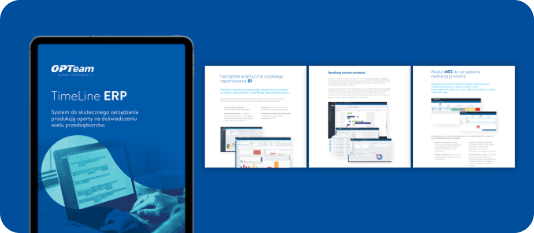Low-code, or a new approach of universities to investing in technological development
It's true that IT systems help improve task organization and process efficiency. However, they don't solve all problems and often create new challenges. The reason for this? Functional system deficiencies force organizations to implement modifications, and when these aren't possible, seek workarounds in the form of complementary solutions. As a result, organizations invest significant resources and waste significant time, with unsatisfactory results. Is this the only approach?
IT infrastructure consists of several key systems with functionalities defined by market requirements, not those of a single organization. Typically, this will be an ERP system supporting finance, logistics, HR, and payroll, as well as adjacent discipline-specific systems—primarily the dean's office system. This set also includes an electronic document flow system. However, every organization at some point begins to consider changing its ERP system. This may be due to incompatible or missing functionalities, or difficulties enforcing modifications related to development. Unfortunately, attempts to modify or expand the functionality of software often end in failure. This applies to companies, institutions, and universities, which often rely on solutions developed specifically for them in the past.
Why is it so difficult to modify systems?
Manufacturers are very reluctant to introduce customized changes to their systems. This stems from the fact that a single system is used by a hundred or more users. If the manufacturer were to introduce personalized changes for each user, the system would have, just like the users, a hundred different versions. In such a situation, software maintenance and updates would be impossible, making it simply impossible for the manufacturer to fulfill individual orders. Therefore, while commercially available off-the-shelf software can handle basic processes and tasks, it no longer provides the ability to automate customized processes, which stem from the nature of the business, legal or economic changes, or the development of the organization itself. In such a situation, it's difficult to talk about unrestricted development, let alone real competitiveness.
Can the missing functionality be added?
The inability to modify software means that certain gaps remain, filled with Excel files or additional solutions, colloquially referred to as "under-desk" solutions, which are growing uncontrollably. Created by various manufacturers and using different technologies, so-called "off-the-shelf" applications represent a high, multiplied cost. They are often ordered and implemented independently by different units within the same organization. Instead of investing in three different solutions, it would be more beneficial to invest in a single, flexible and broadly applicable solution. Furthermore, there's the issue of user convenience with such a large, growing number of off-the-shelf systems and applications, with different interfaces that require the user to constantly switch between them. This is particularly problematic in the case of employee turnover – those changing positions or being hired to replace those leaving. The need to train individuals in new software is time-consuming and expensive for the organization. This approach to digitalization, based on disparate solutions, is neither safe nor convenient.
These challenges and the problems they raise affect every sector, including higher education. To date, digitalization at universities has primarily involved investing in off-the-shelf software and optional additional tools, which together create a diverse environment. This results in a variety of interfaces, lack of compatibility, and, consequently, integration difficulties. All of this reduces the quality of use and increases task completion times.
Proper and effective digitalization requires a holistic and forward-looking approach. It's impossible to focus solely on a specific segment of the organization and its current needs. It's necessary to consider the organization holistically, its operations and existing systems, also taking into account its development over time. It will quickly become clear that the set of basic solutions not only requires, but will require, successive additions. But how can this be done effectively? Is it even possible?
A low-code platform is the new core solution!
The solution to this problem has long been available. For years, it has been used by companies and institutions strongly focused on innovation and development operating in highly developed markets. Low-code platforms are the foundation for successful digitalization there. This is another core software, alongside domain-specific systems, but unlike them, it offers much broader functional capabilities. It provides a single, coherent environment for the rapid creation of numerous individually designed applications, easy to modify, and importantly, with a uniform interface. Therefore, it provides organizations with everything they need in today's world – the ability to develop freely and maintain true market competitiveness.
Applications created in a low-code environment can now be created not only by programmers but also by users with technical predispositions, who, after a short training period, will be able to independently and consciously utilize the potential of this technology. The ideal team for working on a low-code platform is a combination of IT professionals and users who understand the process, its dependencies, and the desired end result. Such a team accelerates work on an application, with a prototype immediately tested and changes implemented practically "on the spot." There's no waiting for subsequent stages of work to be completed before the results can be verified and approved. Everything runs more smoothly because it's ongoing, in real time.
For universities, low-code can be a key technological investment, allowing them to quickly enhance their existing set of domain-specific systems with a platform that enables the efficient implementation of innovations in administration, teaching, and research. As a flexible technology, it will help them remain competitive, be attractive to students, and foster effective collaboration with businesses.
However, not all platforms are created equal!
Some platforms available on the market are low-code in name only. Tailored to the requirements of a single area, they have a relatively limited functional scope, ultimately failing to find wider application. Meanwhile, a platform that is low-code "not only in name" is an open and universal solution. It can be used almost anywhere and to build tools for various purposes, such as the nAxiom platform, which encompasses the design of business applications or management support for statutory activities, as well as document workflows, simple and more complex mobile applications, and applications supplementing proprietary domain systems. The nAxiom platform is a new solution with an architecture compliant with modern security standards. Continuous testing confirms the effectiveness of the protection mechanisms used, ensuring that applications built on it will also be secure, efficient, and stable.
Summary
A low-code platform is an investment that will not only pay off but also pay off in the future. It will provide a unified interface for end users, integrate with third-party software, and allow the necessary applications to be created in a few weeks using a single technology, allowing virtually anyone to work on their continued maintenance and development. Compared to traditional approaches to technology investments, low-code platforms offer significant advantages in terms of both the time to innovation implementation and the associated costs.














